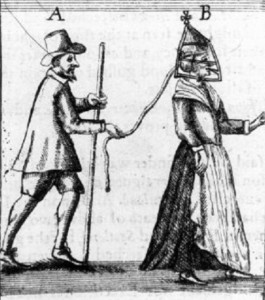The figure of Eve has long been a major focus of attention for theologians, politicians, moralists, instructors, writers or even painters. The -infamous- protagonist of the garden of Eden in the myth of Genesis was a recurrent topic of debate and fuelled countless interpretations which deeply influenced the perception of women and their (god-given) role in the Western Christian societies, and are still deeply-rooted in the popular imagination. Of course these interpretations, along with the myth itself, have been put forward essentially by male authors as a so-called justification of women’s inferiority for men’s interests, in the name of God (Gabel). As Phyllis Trible has pointed out: « Throughout the ages people have used this text to legitimate partiarchy as the will of God. They maintained that it subordinates woman to man in creation, depicts her as his seducer, curses her, and authorizes man to rule over her ». However in the Early Modern period, especially in the 17th century, English women started to claim a public voice to participate in the gender discourse, monopolized by men so far . Despite the male injunction to be silent, they set out to appropriate their so-called « biblical alter-ego » and redress the detrimental literature she inspired.
Adam and Eve
Historical analysis of the figure of Eve and the casuistic debates from the Renaissance up to the 17th century arguing the supposedly inferiority, superiority ou equality of Eve in relation to Adam, in other words of woman in relation to man.
The first protofeminist arguments and the debate over gender roles and the place of woman in society based on Genesis.














Derniers commentaires